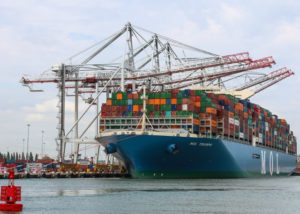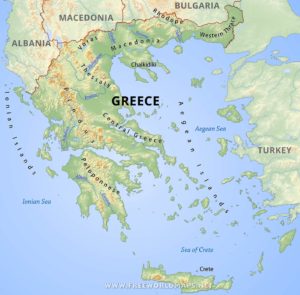Ports that want to become ‘smart’ need to use technologies that automatically adapt to changing situations.
However, for that to happen, there has to be a change in attitude when it comes to collaboration, which is dependent on key players — who may be in competition with one another — agreeing on methods of creating more visibility throughout the supply chain.
Here are three arguments from authors of technical papers in Edition 78 of the Port Technology Journal that show how and why the attitude to such practices may be changing.
1# Digital Tools for Next Generation Workers: Adam Yaron, CEO, FAST Applications
The next generation of people entering the profession has the expertise to use the latest online platforms and tools, which focus on process and managing costs and look to automate and streamline processes, build intermodal relationships, improve customer satisfaction, and maximize opportunities for cost savings.
A digital freight forwarder must offer a range of digital services to the 21st-century customers.
The next step is to create a social supply chain management where strong alliances can be created by networking and sharing data with freight partners online (agents, customers, suppliers, carriers, etc.), which in turn creates a stronger bond and connection to compete as a group.

Image credit: FAST Applications
2# Port Community Connectivity: Chris Collins, Chief Operating Officer, Containerchain
Major port centres including Antwerp, Hamburg, Los Angeles, Long Beach, Rotterdam, Singapore and others, plus shipping line and global terminal operators looking to get more embedded in the supply chain ‘beyond the gate’, are embarking on digital initiatives to capture, harvest, pool and share more data in more collaborative, real-time ways, with maritime and landside logistics stakeholders.
Singapore has recently provided two significant examples of this strategic direction under its National Trade Platform – with plans to connect over 10,000 of its existing registered users to a single independent Transport Integrated Platform (TRIP) that has already connected a large majority of the landside containerized supply chain, and in doing so, delivered significant operational and economic benefits to its stakeholders.
Balancing out platform competition and collaboration, international and localized solutions, closed and open offerings and free market choice against regulatory oversight is a very difficult challenge, but not one that can be avoided if we all want to reap the benefits of digital collaboration.

3# Working as One: Derek Kober, VP Marketing, Navis
The first step to tackle the fundamental lack of visibility in the industry and achieve joint success among key stakeholders is the broader sharing of critical shipment information across the supply chain.
In Navis’ report, surveyed executives echoed this sentiment, reporting the following:
• Agree on the need for stakeholders to operate with a common set of data (97% important; 85% very important)
• Believe the adoption of new technologies is crucial to enabling real-time collaboration (98% important; over 50% very important)
• Believe they will see substantial improvement in operational performance once real-time collaboration is achieved (one-third predict gains over 75%; over half expect gains of at least 50%)
Both voice and data communications are vital to the future of smart port operations.
Automation, collaboration and safety at ports and terminals are all dependent on digital, connected systems that allow mission-critical practices.
Source: Port Technology







